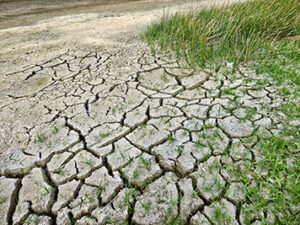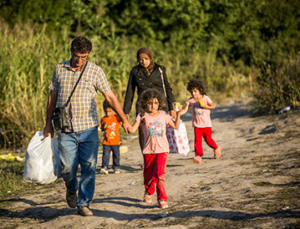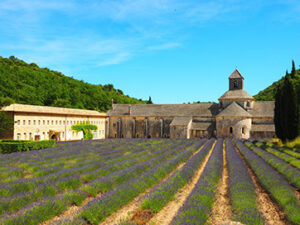Priorities
Please click on each priority below to learn more.
Please click on each priority below to learn more.
“Certain places need greater protection because of their immense importance for the global ecosystem, or because they represent important water reserves and thus safeguard other forms of life.”
—Pope Francis I, Laudato Si, par. 37
The wilderness may seem far from us at home, however, the wild is the home for most species in this world. How we protect and care for wilderness directly impacts all species’ quality of life, including our own.
When we protect wilderness we can save entire ecosystems from destruction, safeguard biodiversity, increase the health of watersheds, and preserve landscapes and the species within them so that these can serve as an inspiring legacy for generations to come.
GoodLands’ Conservation Planning and Comprehensive Master Planning rely on state-of-the-art remote sensing and mapping technology combined with scientific expertise to help our clients identify parcels that can have the greatest positive impact on ecosystems health if placed into conservation easements. We work with partners in conservation, land-trusts, ecology, and technology to make this possible.
GoodLands streamlines connections needed to bridge conservation and land-trusts with communities that own large tracts of land, including a variety of Catholic institutions and our additional clients from the private and public sectors.
“Each organism, as a creature of God, is good and admirable in itself; the same is true of the harmonious ensemble of organisms existing in a defined space and functioning as a system.”
—Pope Francis I, Laudato Si, par. 140
Green infrastructure helps natural systems harmoniously function with the human-built environment. It preserves, mimics, or restores natural functions in the landscape. In urban areas, green infrastructure stormwater management prevents the drainage output of wastewater directly into delicate aquatic ecosystems, while restoring natural hydrological processes and remediating certain toxins in surface runoff. Green infrastructure can enhance ecosystems services, such as by preserving pollinator habitat, while supporting the billions of dollars in contributed pollination services our agricultural industries receive from our insect allies.
Green infrastructure can contribute to harmonious ecological functioning through larger landscape-scale land-use planning and planting practices. Certain planting patterns in the landscape can help support soil health by reducing wind and water erosion. Wildlife corridors enable the connection, dispersal, and migration of species populations. Vulnerable animal populations attempting to obtain resources missing from their current habitat, to migrate, or to reach other populations of the same species in a fragmented landscape are more likely to meet a fatal end. It is critical that we protect green corridors to enable species migration to appropriate areas as climate change shifts habitat zones northwards.
GoodLands Comprehensive Master Planning, Conservation Planning, and Ecosystems Service Evaluations provide design and planning solutions to protect and enhance green infrastructure. GoodLands is collaborating with Esri to understand, down to the parcel-scale, how Catholic-affiliate landholdings in the United States Catholic Conference of Bishops are contributing to nation-wide green infrastructure. Learn more about it here.
“Today, however, we have to realize that a true ecological approach always becomes a social approach; it must integrate questions of justice in debates on the environment, so as to hear both the cry of the earth and the cry of the poor.”
—Pope Francis I, Laudato Si, par. 143
In 2016, 54.5 per cent of the world’s population lived in urban areas [UN]. A holistic approach to property planning reveals how an organization’s urban properties can be used or connected with programs that will help contribute to stronger, more livable and just communities. Land-use planning and design is key for building better urban habitats for humanity.
With GoodLands Clean Energy Master Planning, we assess how all properties (including urban ones) can reduce energy bills and CO2 emissions. Our Food Security Planning evaluates how properties relate to food deserts and can inform your organization about opportunities for intervention that will increase access to healthy food for communities. Our Social Impact Planning works with your organization’s goals to locate properties that would be suitable for community programs and housing retrofitting and connect with partners who can implement appropriate programs in these areas. Our planning packages help identify properties where small changes in the environment and innovative uses of space can make significant improvements for community health and well-being. This includes connecting properties to solutions and partner organizations to support ecosystems services, social services, child care, cultural development and arts, health and wellness, open space and parks, and economic development.
“Greater scarcity of water will lead to an increase in the cost of food and the various products which depend on its use. Some studies warn that an acute water shortage may occur within a few decades unless urgent action is taken. The environmental repercussions could affect billions of people…”
—Pope Francis, Laudato Si, par. 31
Access to healthy food and clean water is a right for everyone. Each day over 500 million people around the world face hunger and malnutrition [source] and even more lack access to clean water [source]. Land-use strategies that support watershed health, protect water resources and maintain or even increase aquifer recharge are key for providing long-term water availability. Land-use strategies that help small farmers access arable land and increase affordable access to healthy food in vulnerable urban populations are vital for addressing hunger, especially as climate change impacts the location of suitable agricultural land for staple crops around the world.
We assess famine risk the regions that your organization’s properties are located in, evaluate its potential threats to your organizations functioning, and explore ways that your properties can be leveraged to address food security in these areas; whether it is as a community agricultural site or emergency food distribution area. In certain regions of the world (such as the United States), where there is appropriate data and community input, we can gain a better understanding of how your property generally relates to food deserts and programs that could increase access to health food for vulnerable populations.
Hunger and malnutrition is a global problem that requires creative solutions and engagement from all organizations willing to try to address its devastating impacts on communities.
“Climate change is a global problem with grave implications: environmental, social, economic, political and for the distribution of goods. It represents one of the principal challenges facing humanity in our day. Its worst impact will probably be felt by developing countries in coming decades.”
—Pope Francis I, Laudato Si, par. 25
Climate change is causing increasingly intense weather disruptions, prolonging droughts, and causing regular severe flooding in coastal regions of the world. Promoting ecological, social, and economic resilience increases the capacity of systems to recovery quickly from disturbances by decreasing the damage inflicted by a disturbance and providing a way to maintain the services necessary for communities and ecosystems to function. Understanding properties’ relation to habitat networks, coastal habitat that can increase flood resiliency, and other ways they may contribute to ecosystems services are important for climate resiliency.
Land can be planned and protected to sustain a network of resilient habitats that will help promote biodiversity under the shifting habitats and changing conditions caused by climate change. Environmental approaches to climate resiliency involve identifying properties that are contributing to critical habitat and prioritizing the preservation of land that contributes to habitat networks. Groups, such as the Trust for Public Land, have a shown that partnering with cities to identify to deploy restoration projects on land that “connect,” “cool,” “absorb,” and “protect” surrounding environments can increase climate resiliency.
“…solidarity must be concretely expressed at every stage of the migratory experience – from departure through journey to arrival and return. This is a great responsibility, which the Church intends to share with all believers and men and women of good will, who are called to respond to the many challenges of contemporary migration with generosity, promptness, wisdom and foresight, each according to their own abilities.”
—Pope Francis I, Message for the 104th World Day of Migrants and Refugees, 14 January 2018
We believe that it is essential that the Church plans to leverage its under-used facilities to address human migration, which we only can expect to increase in the coming century.
In partnership with the Georgetown Program on Forced Migration we can bring tremendous analytic power to understand how migration relates to the Church and her resources. We can work with your organization to better understand how to allocate resources, leverage underused facilities and rapidly and intelligently respond to migration crises.
“There is a need to incorporate the history, culture and architecture of each place, thus preserving its original identity. Ecology, then, also involves protecting the cultural treasures of humanity in the broadest sense.”
—Pope Francis I, Laudato Si, par. 143
“the extraordinarily expressive and symbolic capacity of the artistic forms and motifs, as well as the innovative architectural and sculptural techniques, evokes the supreme Source of all beauty.” (Excerpt from the Recollections of His Holiness Benedict XVI of his Apostolic Journey to Santiago de Compostela and Barcelona, 10 November 2010).
Good architecture has the power to evoke awe, shape experiences, and make individuals contemplate the world in new ways while enabling its users fulfill their necessary functions in a space. There may be no organization in the world that oversees as many timeless architectural cultural artifacts as the Catholic Church. Our Regenerative Real Estate services enable religious communities identify important cultural heritage sites and, if they need to be sold to meet financial needs, work to ensure that real estate transactions occur with buyers who will continue to use the space for a mission-oriented goals that support stewardship, community development, and preserve important architectural heritage.
GoodLands Data Systems provide a platform for Catholic communities and diocese to coordinate connect with individuals and organizations who are willing to responsibly steward the property.







